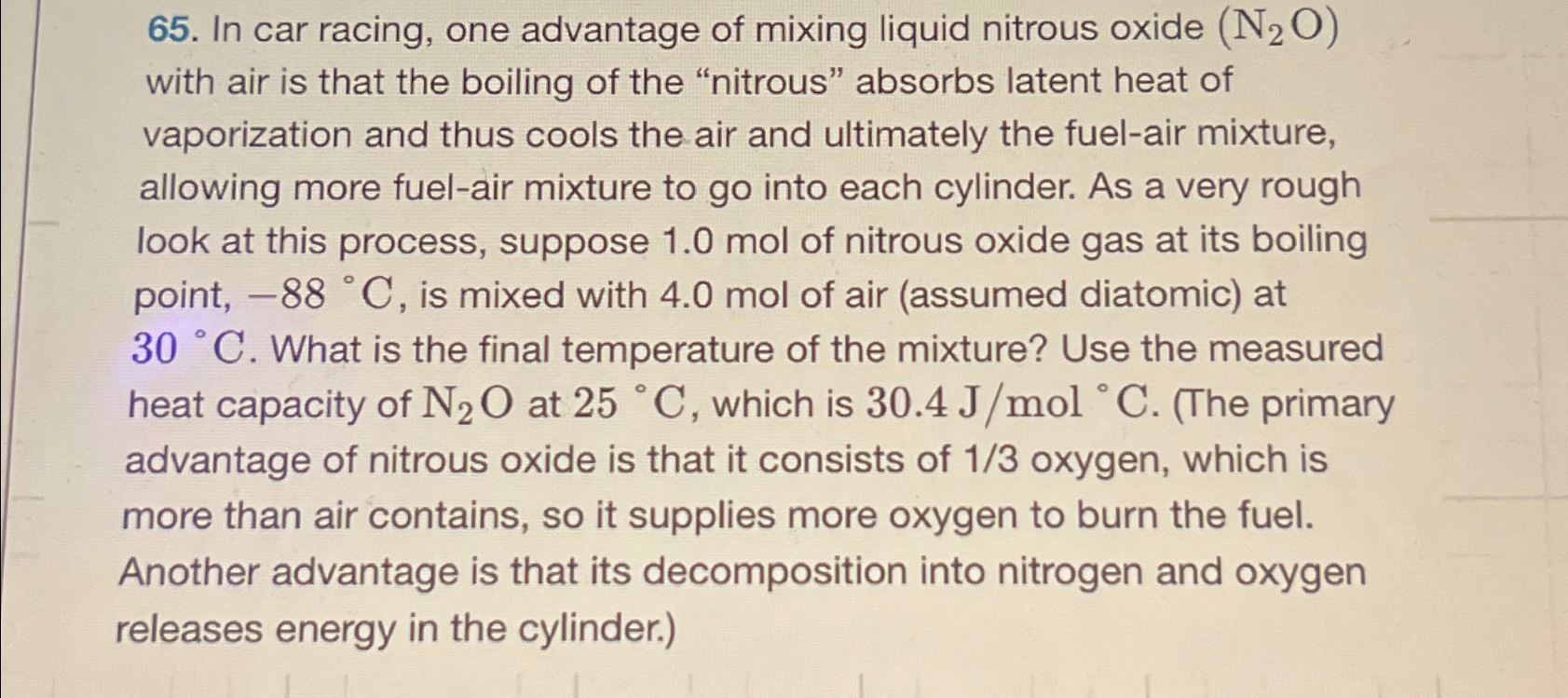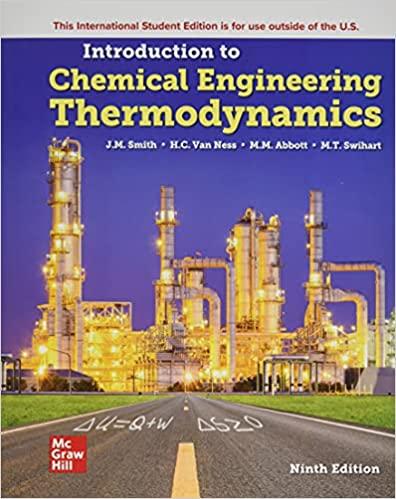Question
In car racing, one advantage of mixing liquid nitrous oxide (N_(2)O) with air is that the boiling of the nitrous absorbs latent heat of vaporization
In car racing, one advantage of mixing liquid nitrous oxide
(N_(2)O)with air is that the boiling of the "nitrous" absorbs latent heat of vaporization and thus cools the air and ultimately the fuel-air mixture, allowing more fuel-air mixture to go into each cylinder. As a very rough look at this process, suppose 1.0 mol of nitrous oxide gas at its boiling point,
-88\\\\deg C, is mixed with
4.0molof air (assumed diatomic) at
30\\\\deg C. What is the final temperature of the mixture? Use the measured heat capacity of
N_(2)Oat
25\\\\deg C, which is
30.4(J)/(m)ol\\\\deg C. (The primary advantage of nitrous oxide is that it consists of
(1)/(3)oxygen, which is more than air contains, so it supplies more oxygen to burn the fuel. Another advantage is that its decomposition into nitrogen and oxygen releases energy in the cylinder.)

Step by Step Solution
There are 3 Steps involved in it
Step: 1

Get Instant Access to Expert-Tailored Solutions
See step-by-step solutions with expert insights and AI powered tools for academic success
Step: 2

Step: 3

Ace Your Homework with AI
Get the answers you need in no time with our AI-driven, step-by-step assistance
Get Started


